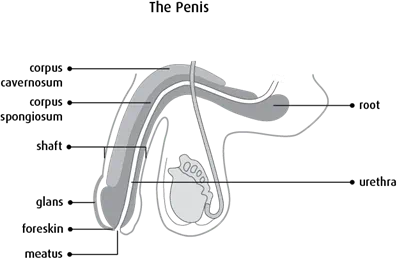Stages of penile cancer
Staging describes or classifies a cancer based on how much cancer there is in the body and where it is when first diagnosed. This is often called the extent of cancer. Information from tests is used to find out the size of the tumour, which parts of the organ have cancer, whether the cancer has spread from where it first started and where the cancer has spread. Your healthcare team uses the stage to plan treatment and estimate the outcome (your prognosis).
The most common staging system for penile cancer is the TNM system. For penile cancer there are 5 stages – stage 0 followed by stages 1 to 4. Often the stages 1 to 4 are written as the Roman numerals I, II, III and IV. Generally, the higher the stage number, the more the cancer has spread. Talk to your doctor if you have questions about staging.

When describing the stage, doctors may use the words local, regional or distant. Local means that the cancer is only in the penis and has not spread to other parts of the body. Regional means close to the penis or around it. Distant means in a part of the body farther from the penis.
Some stages of penile cancer also depend on how different the cancer cells look from normal cells. This is related to the grade of the cancer.
Stage 0 (or carcinoma in situ)
The cancer is only in the top layers of the skin of the penis.
Stage 1
Cancer has grown into the connective tissue just below the skin of the penis, but it has not grown into the blood vessels or lymph vessels (lymphovascular invasion). The cancer cells look and behave a lot like normal cells in the penis.
Stage 2A
The cancer has grown into either:
- the connective tissue just below the skin of the penis (and has also grown into the blood vessels or lymph vessels, or how the cancer cells look and behave is very different from normal cells in the penis)
- the corpus spongiosum (the lower chamber of the shaft of the penis that surrounds the urethra) and may also have grown into the urethra
Stage 2B
The cancer has grown into the corpus cavernosum (1 of 2 upper chambers of the shaft that make up most of the penis) and may also have grown into the urethra.
Stage 3A
Cancer has spread to 1 lymph node in the groin (called the inguinal lymph nodes) and the lymph node is able to move when felt by a doctor.
Stage 3B
Cancer has spread to 2 or more lymph nodes in the groin and they are able to move when felt by a doctor.
Stage 4
Stage 4 describes any of the following:
- Cancer has grown into a nearby structure other than the urethra.
- Cancer has spread to lymph nodes in the groin and has formed a lump that can’t be moved (called a fixed nodal mass) when felt by a doctor.
- Cancer has spread to lymph nodes in the pelvis (called pelvic lymph nodes).
- Cancer has spread to other parts of the body (called distant metastasis), such as to the lungs, liver or bone. This is also called metastatic penile cancer.
Recurrent penile cancer
Recurrent penile cancer means that the cancer has come back after it has been treated. If it comes back in the same place that the cancer first started, it’s called local recurrence. If it comes back in tissues or lymph nodes close to where it first started, it’s called regional recurrence. It can also recur in another part of the body. This is called distant metastasis or distant recurrence.
